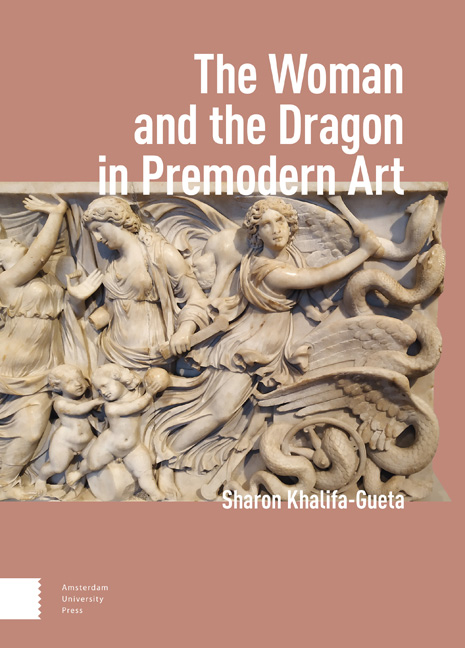Book contents
- Frontmatter
- Contents
- Acknowledgments
- Introduction
- 1 The Dragon
- 2 The Cave and the Womb: The Myth of Cadmus and the Myth of Apollo and Python
- 3 Eligible Wives and Monstrous Women: Andromeda and Medusa
- 4 Medea – The Holy Woman and the Witch
- 5 Eve and Lilith — Christianizing the Great Goddess and the Dragon
- 6 Saint Margaret – Taming the Dragon
- Conclusion
- Bibliography
- Index
3 - Eligible Wives and Monstrous Women: Andromeda and Medusa
Published online by Cambridge University Press: 17 February 2024
- Frontmatter
- Contents
- Acknowledgments
- Introduction
- 1 The Dragon
- 2 The Cave and the Womb: The Myth of Cadmus and the Myth of Apollo and Python
- 3 Eligible Wives and Monstrous Women: Andromeda and Medusa
- 4 Medea – The Holy Woman and the Witch
- 5 Eve and Lilith — Christianizing the Great Goddess and the Dragon
- 6 Saint Margaret – Taming the Dragon
- Conclusion
- Bibliography
- Index
Summary
Abstract: The hero Perseus encounters both Andromeda and Medusa, two opposite types associated with the motif of the woman and the dragon. This chapter reveals the complexity of these related myths, while shifting the focus to their female protagonists. This epistemological perspective illuminates social views, desires, and fears concerning women in ancient Greco-Roman cultures. By contrasting the “good” and the “defiled” woman, the discussion clarifies why the sacred connection between a woman and a dragon must be severed at the threshold of marriage, and how her identity as a “Bride of Death” alludes to the transformation experienced in this moment. By contrast, a defiled holy woman, such as Medusa, cannot exist within patriarchal culture, and must be isolated, killed, or controlled.
Key Words: Andromeda, Medusa, Perseus, marriage, Great Goddess, Bride of Death.
The myth of Perseus and Andromeda has endured since antiquity as one of the best known and most popular myths in Western culture. Watkins, who examines the Indo-European roots of the dragon-slayer topos, relates it to similar myths from Indian, Persian, and Mesopotamian literary sources, and traces its roots to an earlier, perhaps pre-literary era. Although this myth is indeed typical of the dragon-slayer topos, every culture has emphasized different aspects of it. The myth of Perseus and Medusa also has roots that can be traced back to the third millennium BCE, and is considered by many scholars to have developed from the monstrous Mesopotamian Humbaba, who has a similarly terrifying appearance and a deadly gaze. This chapter examines artistic and literary renditions of these two myths in the context of Greco-Roman culture, and contrasts them with one another. Examining the same hero in two contrasting scenarios involving a woman and a dragon allows for an exploration of the complex meanings of the interactions between them. As the following discussion will show, artistic representations of these myths depict a wide range of symbolic attributes, which were transformed over time in reaction to cultural changes, thus reflecting the gravitation to different sites of meaning.
- Type
- Chapter
- Information
- The Woman and the Dragon in Premodern Art , pp. 89 - 126Publisher: Amsterdam University PressPrint publication year: 2023



